silence-of-others-community-members-mw19-collection
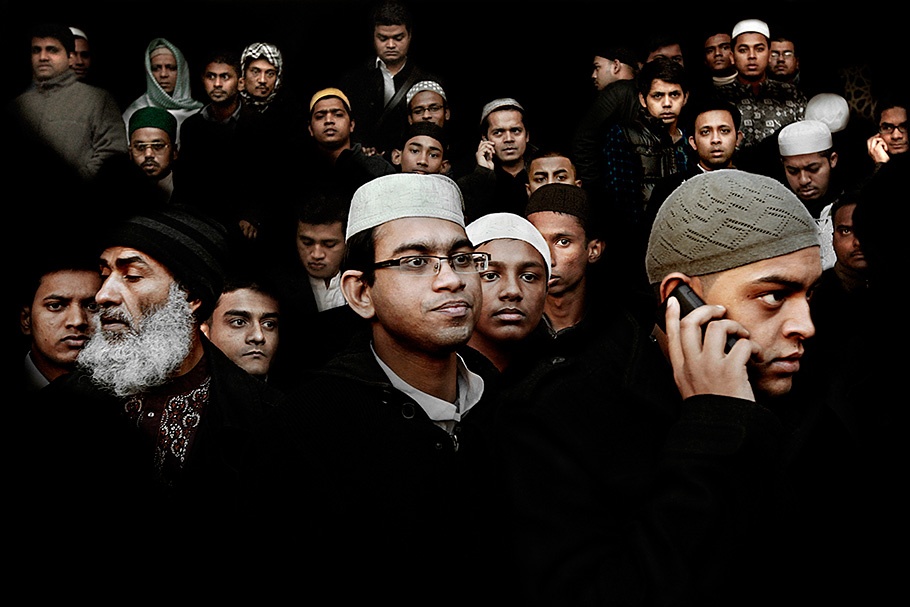
Community members leave the East London Mosque after Eid prayers in London. Combined with the adjoining London Muslim Centre, it is one of the largest mosques in the United Kingdom. November 16, 2010.
silence-of-others-amina-mw19-collection
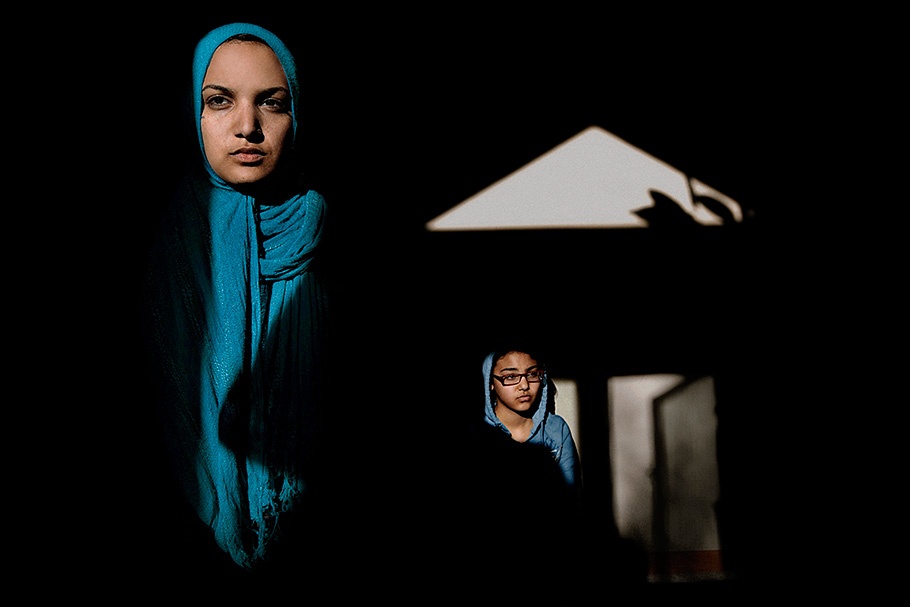
Amina Demir (left) and her younger sister were in their car in Bridgewiew, Illinois, when a middle-aged Caucasian male in a car next to them shouted, “sand nigger” and drove away. Amina followed his car, got his license plate number, and reported him to the police. A local court later sentenced the man to 150 hours of community service. June 3, 2010.
silence-of-others-bridge-mw19-collection

Eric Bhaimia, 21, stops for directions on the North Wells Street Bridge in Chicago, Illinois. “I do not come to this part of the city frequently as I always feel that I am lost in this crowd of people,” he said. May 24, 2010.
silence-of-others-horse-mw19-collection
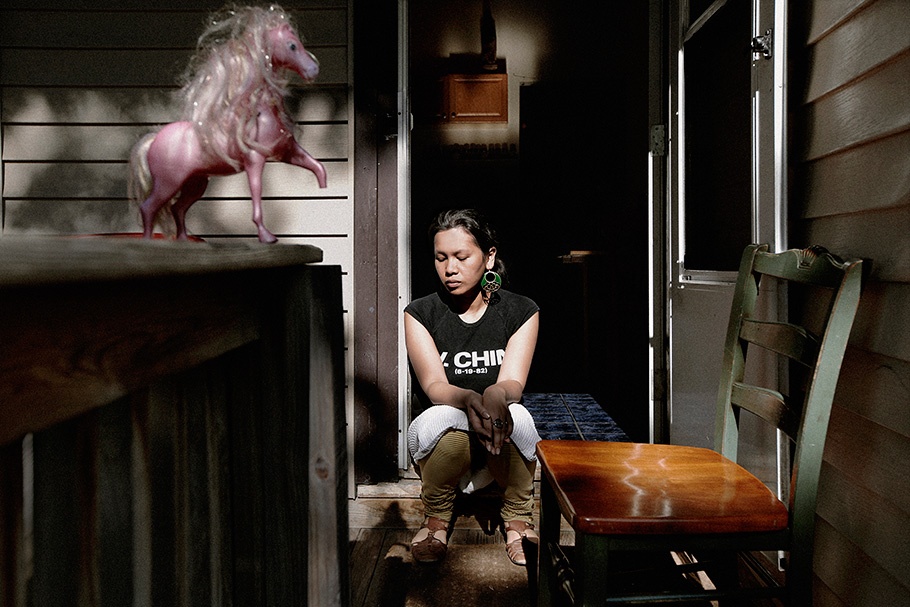
Anida Yoeu Ali, an artist, had her exhibit at the School of the Art Institute of Chicago defaced by vandals on May 11, 2010. The exhibit, which addressed racial profiling and the rise of violence and hate directed at Muslims in the post-9/11 era, was vandalized with large caricatures and a word bubble highlighting the text “Kill all Arabs.” May 27, 2010.
silence-of-others-flag-mw19-collection
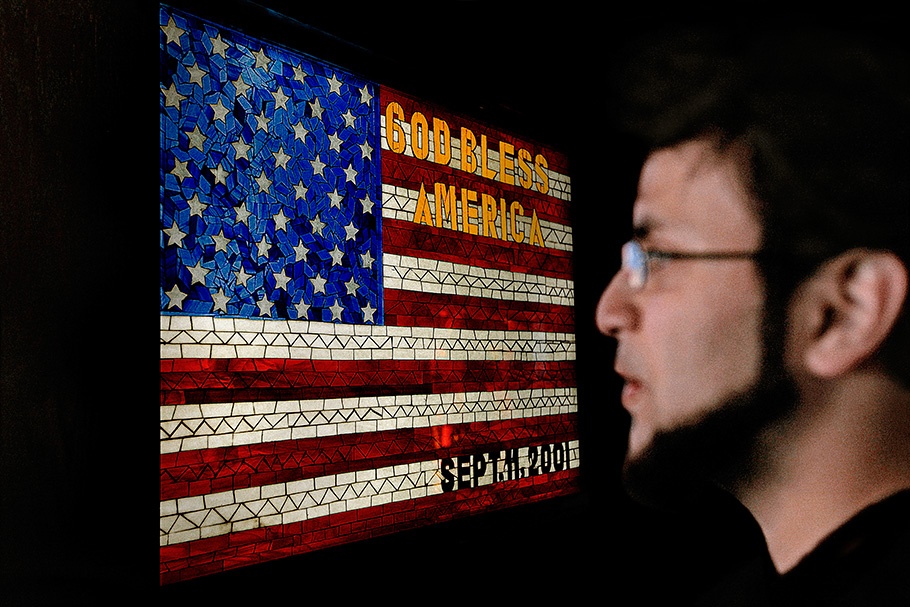
Yaser Aslam, 22, walks past an art installation at the Smith Museum of Stained Glass Windows in Chicago, Illinois. In January 2002, after the failed shoe bombing of a U.S. commercial airliner, Yaser and his younger brother were at a local shoe store with their friends when a female employee walked up to them and commented, "These shoes are meant for display and not for destruction." April 29, 2010.
silence-of-others-performance-mw19-collection

Amina Demir, 24, performs the 1700% poem at the School of Art Institute of Chicago's Sullivan Galleries, Chicago, Illinois. The 1700% Project, by Anida Yoeu Ali, is a response to injustices directed at the Muslim community. The poem is a cento (100 lines of found writings) based on filed reports of hate and bias crimes against Arabs and Muslims since 9/11. May 21, 2010.
silence-of-others-jumping-mw19-collection
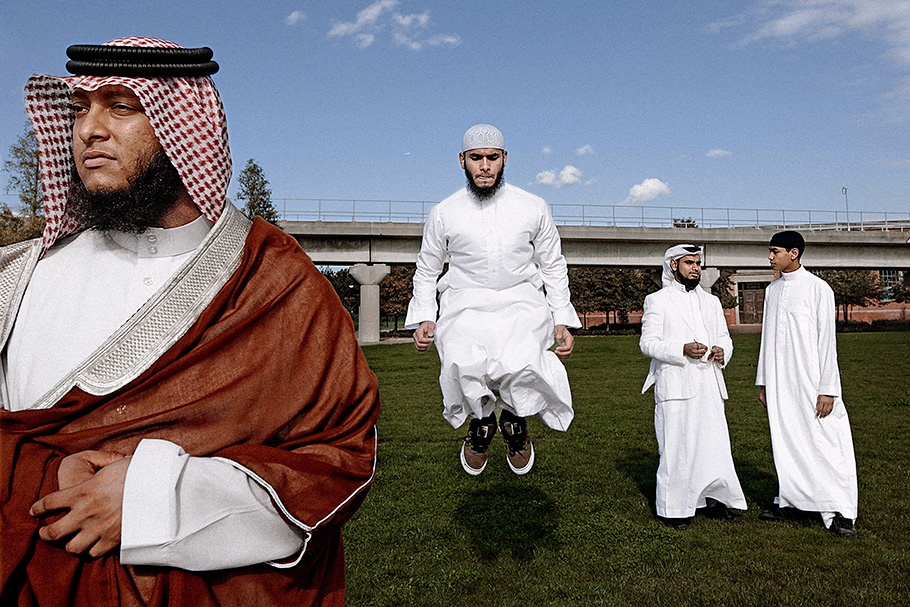
Minhaj, Ashiq, Shofique, and Abid (left to right) just before they departed London to attend a gathering on “Islam and Young Muslims” in Birmingham, United Kingdom. October 17, 2010.
silence-of-others-girl-with-flower-mw19-collection

Caitlyn Green (right), 19, and her friend Khadija Noor (name changed), 29, in a field outside Columbia, Missouri. Caitlyn lives in a rural town and converted to Islam more than a year ago. Her Catholic parents and relatives have not accepted her decision. “People ask me whether a hijab on my head makes me feel uncomfortable,” says Caitlyn. “Actually, wearing the hijab is not difficult if people around you understand your religion. If I am around people who cannot accept me with a hijab on my head, then it gets difficult for me, too.” July 2, 2010.
silence-of-others-beach-mw19-collection
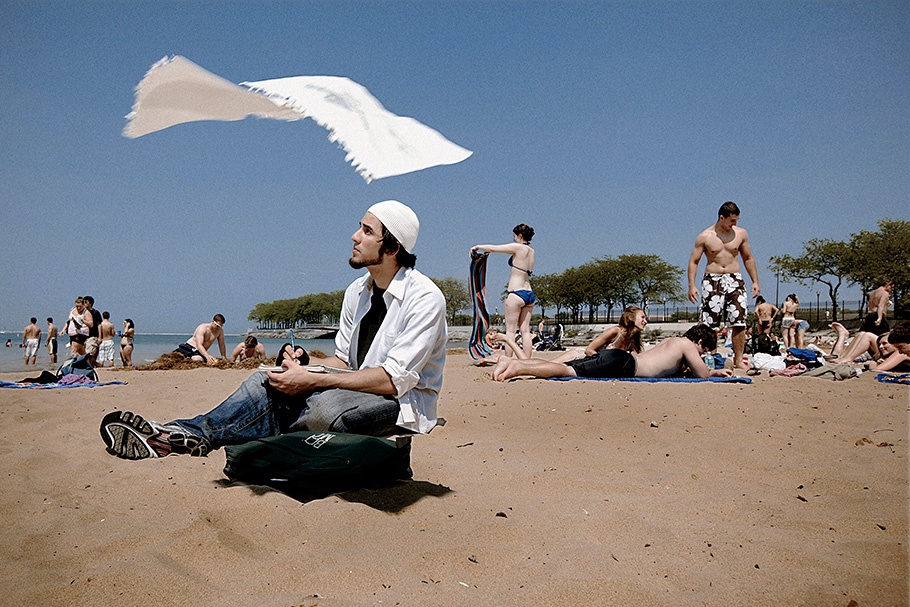
Kaiser Aslam, 19, sketches the Chicago skyline at the Ohio Street Beach, as his sheets of drawing paper fly around. “It's not easy,” says Kaiser. “There are a lot of temptations in this society but it’s my faith in Allah, and his blessings that shield me from all wrongdoings.” May 24, 2010.
silence-of-others-little-girl-mw19-collection
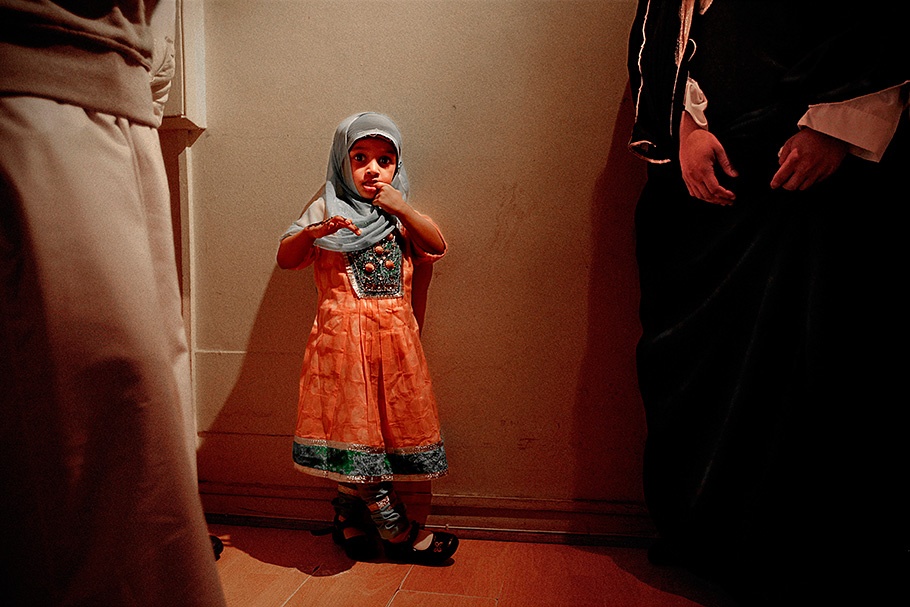
Safina Rehman (name changed) has her hand marked with henna during an Eid party at her house in Brick Lane, London. November 16, 2010.
silence-of-others-boxer-mw19-collection
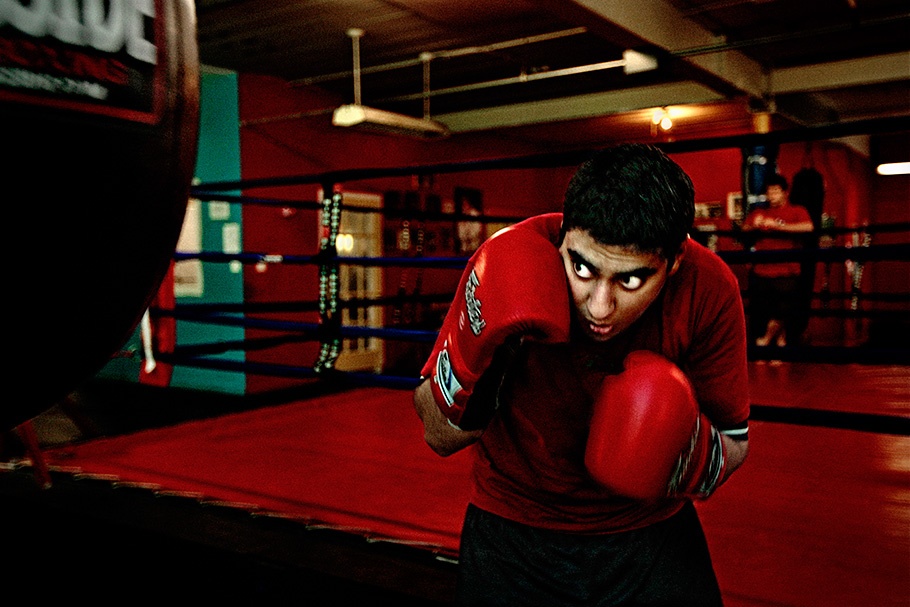
Iqbal Shariff, 24, practices punch combinations at a gym in Evanston, Illinois. “As a child,” says Iqbal, “I always thought that a situation similar to the French Revolution would occur in my neighborhood and people would take over my house. I was very scared then and felt that I would lose everything because I was a Muslim.” May 17, 2010.
silence-of-others-plant-in-hand-mw19-collection

A man walks past a poster at the Global Peace and Unity event in London. The British government boycotted the annual event this year claiming that many extremist groups were also participating and funding the event. October 23, 2010.
silence-of-others-fair-mw19-collection
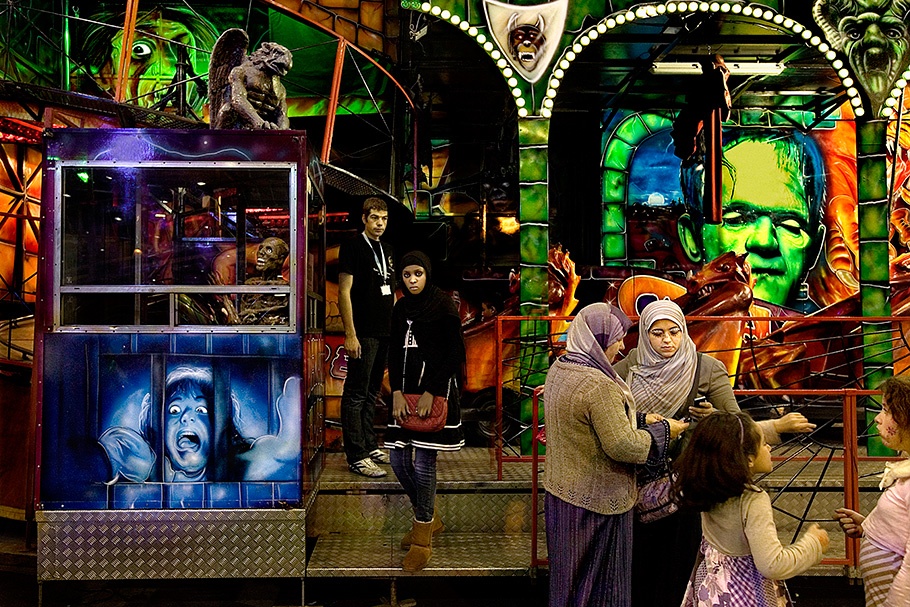
Muslim women and children attend a fair in London. October 24, 2010.
Bharat Choudhary is a freelance documentary photographer from India. For the first 14 years of his life, he lived in Nigeria before moving back to India with his parents. After receiving a degree in forestry management, he spent five years working with NGOs on issues of rural poverty and education. Choudhary’s life changed when his father gave him two cameras as a gift: an old Asahi Pentax K2 and a Minolta X-700.
His photography was shaped and developed through the mentorship of Magnum Photos photographer Raghu Rai in New Delhi. Choudhary was soon awarded the Ford Foundation International Fellowship to study at the University of Missouri in the United States, where he worked for the Columbia Missourian newspaper and received an MA in photojournalism in 2010. Upon completing his studies, Choudhary moved to England.
Choudhary won first place in the College Photographer of the Year competition’s International Picture Story category in 2009, and his work has been recognized by Pictures of the Year International, the Photocrati Fund, the Royal Photographic Society’s Joan Wakelin Bursary, and the Ian Parry Scholarship.
Currently based in London, Choudhary is documenting young Muslims through the lens of identity, religion, and conflict. His project is supported by a 2011 grant from the Alexia Foundation.
Bharat Choudhary
The Silence of “Others” aims to convey the emotional struggles of young American and British Muslims as they contend with stereotyping and religious discrimination in the era following the September 11, 2001, attacks in the United States, and the July 7, 2005, bombings in London. Amidst the hatred and violence perpetrated by a few in the name of Islam, many Muslims in the United States and Western Europe find themselves the subject of hostile social and political debates and scrutiny in which collective blame is heaped on these communities due to the actions of an extremist minority.
I began researching and photographing this project in the American Midwest and then moved on to the United Kingdom. I have met young Muslims who have experienced physical or verbal assaults and many more who are grappling with questions of identity in the context of religious intolerance. Through lengthy interviews, I have sought to better understand their perceptions and experiences. I have spent time with Muslim families in their homes and on the streets in an effort to bring forth a nuanced understanding of the experience of young people from various Muslim backgrounds living in different communities in the United States and the United Kingdom. By presenting a range of activities, behavior, emotions, personal spaces, and external interactions of young Muslims, I want my images to cut through the clutter of stereotypes, highlight the subjective experiences of Muslim youth, and provide insights into their motivations and actions.
Whenever I think about what led me to produce The Silence of “Others,” I cannot help but think of the changes that have occurred since the September 11 attacks in the United States and the violence I came across in 2002, within a year of September 11. The Indian state of Gujarat was rocked by the country’s worst Hindu and Muslim riots, resulting in the deaths of over 1,000 people. As a member of an inter-religious harmony project team, I worked with many Muslim families who had been affected by the riots.
Working intensively with a community is never easy. The search for project participants never ends, and it’s very natural to feel lost halfway through the journey and look for new directions. The only effective antidote is an even more intensive involvement with the community.
My work on this project is an ongoing education. It is an ever-evolving process. But through these images, I aim to share several interesting and relevant components that comprise a small part of a larger narrative. The Silence of “Others” is not about taking sides. It is about understanding people, their minds, their hearts, and the impact of prejudice, in all its forms, on individuals and communities.
—Bharat Choudhary, November 2011
At Home in Europe Project
The At Home in Europe project conducts research and advocacy activities that examine the situation of minorities in a changing Europe. Through its research and engagement with policymakers and communities, the project explores issues involving the political, social, and economic participation of Muslims and other marginalized groups at the local, national, and European levels. Currently, the project is producing an ongoing series of reports that examine
the level and nature of integration of Muslims in 11 cities across Europe. Advocacy efforts based on the reports’ findings aim to influence public policies on integration of Muslims and other minorities, and change attitudes and behavior by challenging assumptions and stereotypes.
U.S. Programs Equality Fund
The U.S. Programs Equality Fund seeks to ensure justice and equality, prohibit arbitrary and discriminatory government action, and lift barriers that prevent people from participating fully in economic, social, and political life. The fund supports initiatives that illustrate the shared interest that people of color, immigrants, women, and LGBTQ people have in promoting equality and opportunity.
U.S. Programs National Security and Human Rights Campaign
The U.S. Programs National Security and Human Rights Campaign is working to promote progressive national security policies that respect human rights and the rule of law. The campaign’s priorities include countering anti-Muslim bigotry and ending racial, ethnic, and religious profiling of Muslim, Arab, South Asian, and Middle Eastern individuals and communities. The campaign is working to build the capacity of organizations from these communities to fight for civil rights and civil liberties and to promote the acceptance of these communities in American society.